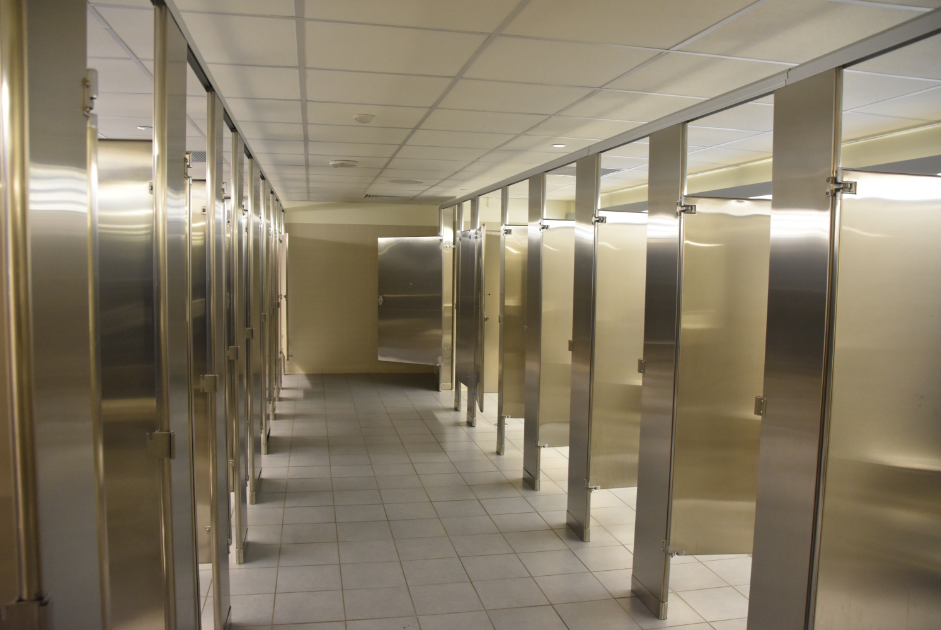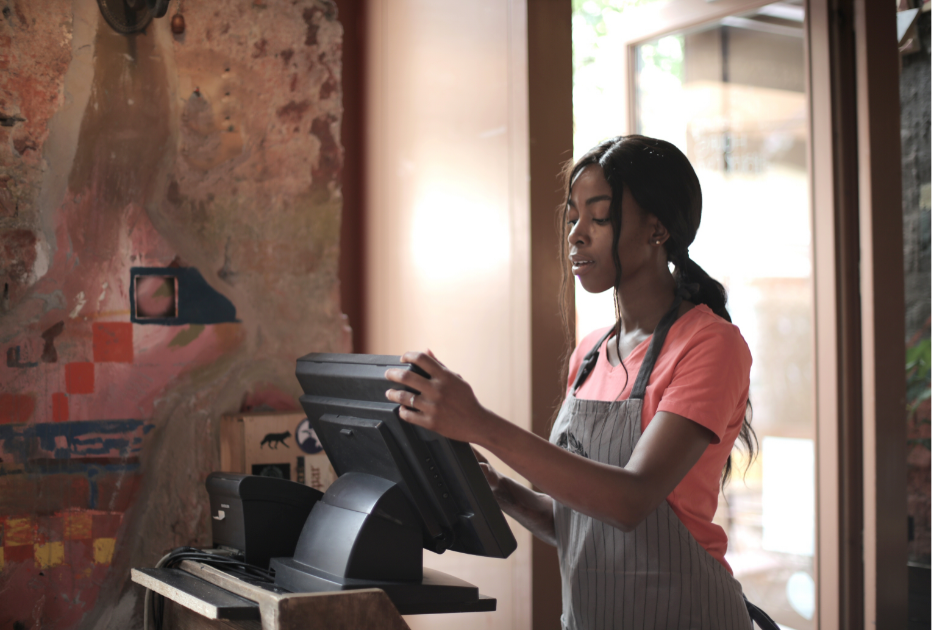Welcome to the world of hyper-realistic silicone masks
The amazing disguises in "Mission Impossible" aren't as unrealistic as you think.

Masks have gotten so good, 1 in 5 people can't even identify one.
In the Mission Impossible movies, you can never quite trust anything you see. That's because the films make liberal use of futuristic and wild fictional mask technology. At least, I thought it was fictional.
With a simple scan or photo of someone's face and a machine that fits in a briefcase, Ethan Hunt (Tom Cruise) and his team can 3D print a mask that's 100% indistinguishable from the real thing. Add in a little extra technology that helps the spies mimic others' voices and you've got the perfect disguise. Cruise can walk amongst the bad guys without fear, and his costars get the fun challenge of playing Tom Cruise playing themselves! It makes for incredible entertainment.
I've always loved the movies and understood that part of the viewing experience is learning to suspend my disbelief. The gadgets, stunts, and disguises are a lot of fun, but pretty out there.
And then I saw this video, and it opened the door to the new, and more than a little frightening, world of hyper-realistic silicone masks.
In the clip shared by Science Girl on X, a man tries on a lifelike mask in real time, sliding it over his head, and in just a moment and with one small wiggle of the nose, he's completely transformed. I thought for sure the whole thing had to be AI-assisted, but no. The clip originated from a mask manufacturer called FL Silicone Mask. They've got tons of demonstrations all over their Instagram page.
The final result of this mask in particular is a little unnerving, a little uncanny valley. There's something off with the way it looks but it's really hard to say what. The details are incredible, the eye-sockets seamless. The mouth can even move open and closed.
In passing, without looking for it, you'd probably never have any idea that this person was wearing a mask. Just see for yourself. It's no wonder the post clocked over 27 million views on social media.
Realistic masks like this one have actually been researched. Studies have shown that about one in five people can be fooled by someone in a realistic silicone mask.
A research study out of the Universities of York and Kyoto asked volunteers to look at photographs of people wearing a realistic mask, and photos of people not wearing a mask. They had to guess which was which, and an astonishing 20% of the selections turned out to be wrong. Considering this was a controlled environment where participants were actively looking to see if someone was wearing a disguise, it's even scarier to Imagine how easy it would be to get fooled in real life when you aren't on your guard.
- YouTubewww.youtube.com
The technology for hyper-realistic masks has grown by leaps in bounds in recent years. The fit and detail work on them is astonishing, so much so that it's becoming cause for concern.
While Tom Cruise uses his disguises to save the world, not everyone is so altruistic. Police forces all over the world are facing more and more challenges with criminals using creative camouflage.
The "Geezer Bandit" once terrorized San Diego banks for years, robbing them while disguised as an old man. He or she was never caught.
Realistic silicone masks are expensive, usually costing several thousand dollars, and good ones are hard to find. Mesh masks that can be worn under a hoodie are a lot more cost-effective and incredible at fooling security cameras from a distance. Worse yet, masks can be made in the likeness of almost any person, making identity theft a serious concern.
from Damnthatsinteresting
There might be a bright side to this bizarre technological advancement, though.
For years now, wigs have been helping people with various forms and causes of hair loss find their confidence again. It's a chance to blend in with the public and not feel othered by stares or field any questions. It allows people to just exist the same way anyone else does.
Masks haven't been able to do the same thing because, well, they've always looked like masks. But you have to wonder if the technology has finally reached a tipping point where they too could become a source of confidence and normalcy for people with facial deformities or disfigurations.
When mangled soldiers were returning from WWI by the hundreds, a British sculptor named Francis Derwent Wood opened up a shop that specialized in creating masks that would hide their scars. According to Forces News, "Wood's painted metal mask work was an attempt to give back to veterans the sense of self-worth and pride they once had in their appearance and help them 'fit in' back on civvy street."
Maybe these stunningly-accurate silicone creations could do that for a new generation of people who could use a little help feeling like themselves again. No one should ever feel like they have to wear a mask or hide their face. But if you're going to wear one, it might as well be the best quality you can find!




 Beaver on riverbank.
Beaver on riverbank.  Pbs Nature Swimming GIF by Nature on PBS
Pbs Nature Swimming GIF by Nature on PBS  An actual beaver dam on the now-thriving Price River
An actual beaver dam on the now-thriving Price River 
 Who doesn't love Pluto?
Who doesn't love Pluto?  Pluto agrees.
Pluto agrees. 
 Woman in denim jacket covers face with sleeve, standing outdoors with blurred background.
Woman in denim jacket covers face with sleeve, standing outdoors with blurred background. Woman with outstretched arms in a sunlit field, enjoying the outdoors.
Woman with outstretched arms in a sunlit field, enjoying the outdoors. Lush forest with vibrant green and orange foliage in soft, misty sunlight.
Lush forest with vibrant green and orange foliage in soft, misty sunlight. Friends laughing and drinking coffee at a cozy cafe table.
Friends laughing and drinking coffee at a cozy cafe table. Woman with curly hair in sunlight, eyes closed, wearing a purple top.
Woman with curly hair in sunlight, eyes closed, wearing a purple top. Man smiling with hand over face, standing outdoors against a blue sky background.
Man smiling with hand over face, standing outdoors against a blue sky background. Hand painting a still life on canvas with blue and orange tones.
Hand painting a still life on canvas with blue and orange tones. Woman sitting on a chair in the water, writing in a notebook at sunset.
Woman sitting on a chair in the water, writing in a notebook at sunset.
 "Bought an espresso machine, took some time to learn how to dial it in and pull a proper shot."
"Bought an espresso machine, took some time to learn how to dial it in and pull a proper shot." "Frozen meals are just as unhealthy, but much cheaper."
"Frozen meals are just as unhealthy, but much cheaper." "I’ve embraced the gray!"
"I’ve embraced the gray!"  "Bidet toilet seat is cheap, easy to install, much easier and faster to use."
"Bidet toilet seat is cheap, easy to install, much easier and faster to use."
 American portion sizes are colossal.Canva Photos
American portion sizes are colossal.Canva Photos American public restrooms aren't very private.Canva Photos
American public restrooms aren't very private.Canva Photos Cashiers in America stand all shift long.Canva Photos
Cashiers in America stand all shift long.Canva Photos America loves the Pledge of Allegiance.Canva Photos.
America loves the Pledge of Allegiance.Canva Photos. Cosmetic surgeries on pets are...a choice.Canva Photos.
Cosmetic surgeries on pets are...a choice.Canva Photos. America loves extra sugar in savory foods.Canva Photos.
America loves extra sugar in savory foods.Canva Photos.